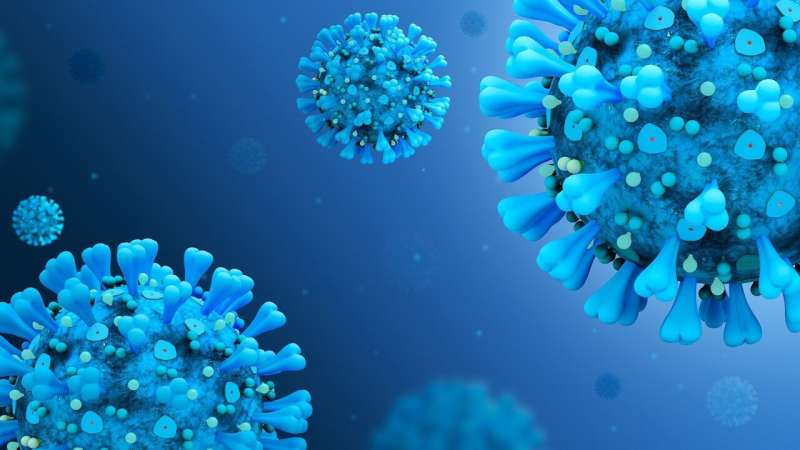Credit: Pixabay/CC0 Public Domain
It is daunting to think that there could be another pandemic in this lifetime. Understanding and documenting behavioral aspects during the COVID-19 pandemic will help to better prepare society for the next one.
Early in the COVID-19 pandemic and prior to the development of vaccines, various prevention measures were recommended by the United States Centers for Disease Control and Prevention (CDC) and the World Health Organization (WHO) to inhibit the spread of the virus. In April 2020, researchers from Florida Atlantic University conducted a study to explore the influence of perceptions of COVID-19 on these prevention practices.
The study sample included 719 members of a public social-media group focused on providing updates and information on COVID-19. Participants completed an online survey that included items associated with the Health Belief Model, a tool used to help predict health behavior, and various aspects of COVID-19, which included experience, perceptions and 10 prevention practices recommended by the CDC and WHO. Perceptions of COVID-19 included participants' perceived susceptibility or risk of contracting the virus. Perceived potential severity if they contracted COVID-19 related to their concerns regarding the seriousness of the virus and resulting consequences.
Results, published in the Journal of Community Health, revealed that while much of the media and policy makers have promoted the susceptibility of COVID-19 such as the number of cases, this study showed that it is potential severity that has a stronger influence on prevention practices.
In addition, a moderation analysis revealed no interaction between perceived susceptibility and severity. Successful behavior change in prevention practices due to emphasis on severity is not dependent on emphasis on perceived susceptibility. To optimize prevention practices, the study provides evidence that public health education programs should emphasize the potential severity of COVID-19 over the potential susceptibility of contracting COVID-19, without concern that the relationship depends on the alternative variable.
"In order for the public to adhere to prevention measures that were recommended early in the pandemic, they needed to understand the purpose and value of these measures to be persuaded to comply, which involves behavior change," said Michael A. DeDonno, Ph.D., senior author, a research psychologist and an associate professor, research methodology, FAU's College of Education. "Behavioral changes are influenced by the perception of the challenge—in this case—COVID-19. To improve adherence to prevention practices, it's important to understand factors that may influence adherence."
To assess prevention practices, researchers used a survey that included a 10-item prevention practices questionnaire. At the time of this study, the CDC and WHO were promoting prevention practices that included staying home, limiting socializing, social distancing, washing hands, using hand sanitizer, cleaning surfaces, limiting trips to public areas and wearing a mask. Therefore, assessment of prevention practices included the summation of these 10 items.
Among the findings of the study showed that:
- Nearly 73% of the participants self-reported above average knowledge of COVID-19; 26.2% reported average knowledge; and only 1.1% reported below average knowledge;
- For example, 88.2% were aware that the recommended time to wash hands is 20 seconds; 85.8% were aware that the distance for social distancing is 6 feet; and 85.5% correctly identified onset of symptoms from two to 14 days;
- Relative to susceptibility, 6.3% of the participants said they were "very unlikely" to contract COVID-19; 45.7% said they were "unlikely" to contract COVID-19; 39.6% said they were "likely" to contract COVID-19; and 8.5% said they were "very likely" to contract COVID-19;
- Relative to the potential severity of contracting COVID-19, only 14.9% of the participants reported that it would "not at all be serious;" 43.1% said it would be "somewhat serious;" 25.2% said it "would be serious;" and 16.8% of the participants reported that the severity "would be very serious."
"Healthcare educators and community leaders should consider emphasizing the severity of COVID-19 including post-COVID-19 conditions known as long COVID such as weakness and respiratory issues like a lingering cough that can persist for weeks or even months after being infected. This increased emphasis on the severity of COVID-19 could lead to increased prevention practices," said DeDonno. "Importantly, to inhibit the spread of future viruses leading to a pandemic, it may be prudent to further build relationships between social scientists, healthcare researchers and marketing researchers because this goes beyond psychology, healthcare and marketing, and into the realm of behavioral health marketing."
More information: M. A. DeDonno et al, Perceived Susceptibility and Severity of COVID-19 on Prevention Practices, Early in the Pandemic in the State of Florida, Journal of Community Health (2022). DOI: 10.1007/s10900-022-01090-8
Provided by Florida Atlantic University
























